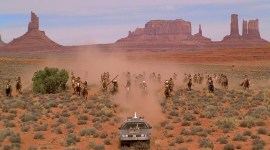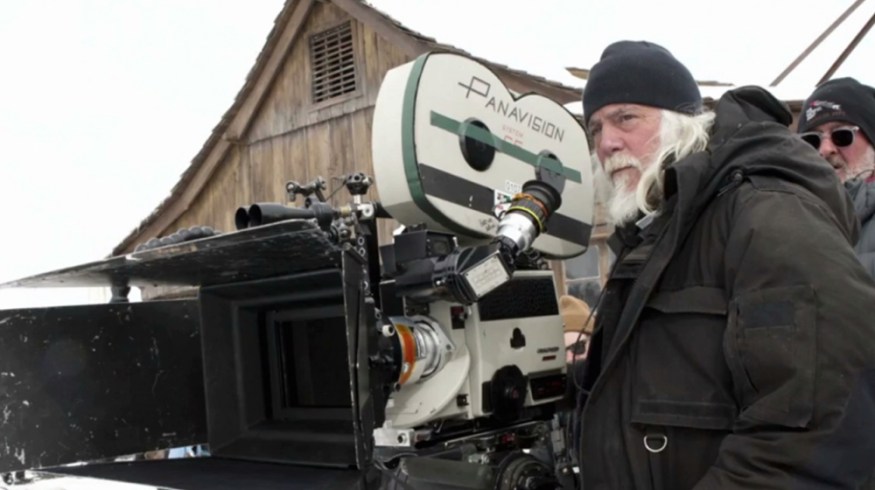
Important Cameras of Cinematic History
These game-changing cameras changed the face of cinema, one frame at a time.
Above photo of cinematographer Robert Richardson from the set of ‘The Hateful Eight’
After roughly a century of cinema, we’ve seen countless looks appear on screen as a result of countless camera variations, each with their own pros and cons. Among so many types of cameras throughout film history, few have stood out. With the transition from film to digital currently in its final stages, now is a good time to look back at some of the most iconic or game-changing cameras in movie history.
1. Bell & Howell 2709 Standard 35MM
In the early 20th century, one of the biggest faults in camera technology was a lack of standardization. Manufacturers had yet to establish a universal film size that could be played back at any theater, but Bell & Howell changed this when they decided to only manufacture their various camera and projection technology according to a 35mm film width format. By standardizing their already popular equipment, they standardized the entire motion picture industry.
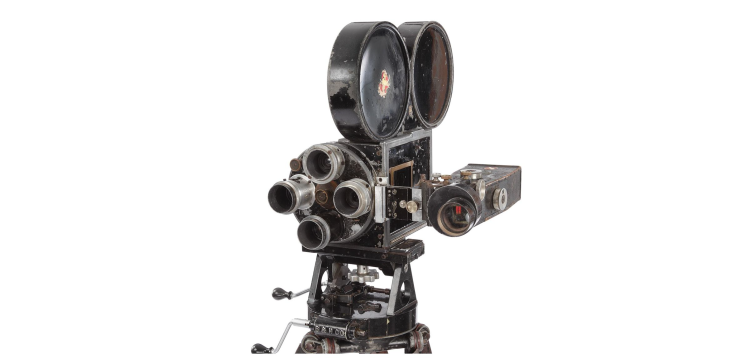 Image via iCollector
Image via iCollector
The 2709 Standard 35mm was arguably their most historically significant model, as prior to its existence cameras were built with wood and leather. After filmmakers Martin and Osa Johnson lost their camera to termites and mildew in Africa, Bell & Howell released the first ever all metal movie camera, the 2709 Standard. By 1919, almost all Hollywood productions were using Bell & Howell equipment.
2. Bolex H16
While the Bolex H16 didn’t quite provide a level of image quality comparable to many on this list, it was nevertheless very important in film history. Bolex chose to take a step forward in the consumer industry by giving more people the opportunity to experiment with the medium.
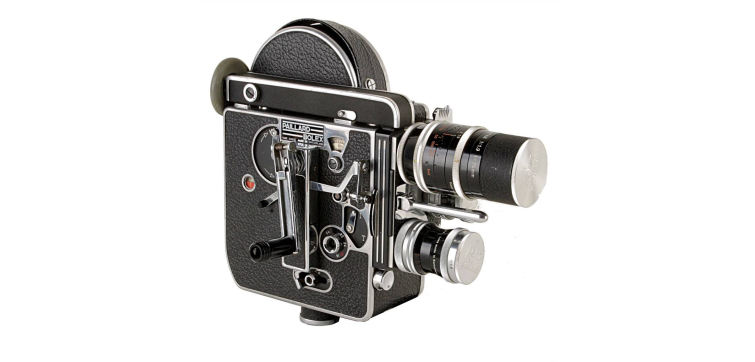 Image via LiveAuctioneers
Image via LiveAuctioneers
Eventually one of the best-selling cameras of its time, this consumer-level 16mm camera was a choice tool for the young Steven Spielberg, and was a blessing for many other aspiring filmmakers that were looking for something reliable and versatile, yet still cinematic. Arguably the equivalent of the modern day DSLR, the H16 offered a stellar picture at a reasonable price.
3. Super Panavision 70/Ultra Panavision 70 Systems
The Super Panavision 70 is among the more recognizable names on this list, having provided some of the definitive cinematic experiences in movie history. One of the quintessential 70mm systems, this spherical lens-based camera system brought you classics such as West Side Story, Lawrence of Arabia, and 2001: A Space Odyssey.
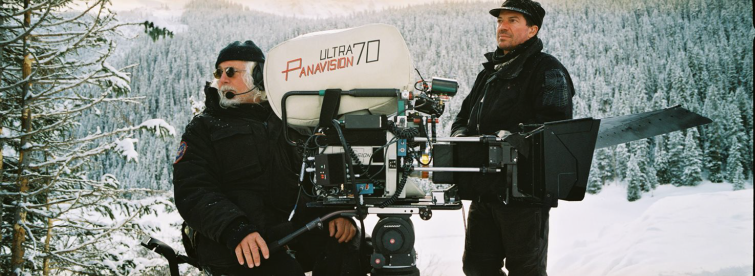 Image via EOSHD
Image via EOSHD
Boasting a simply massive image size that still exceeds that of most digital movies today, the Super Panavision 70 brought forth a sense of true scope and wonder synonymous with films such as Kubrick’s 2001. This camera’s anamorphic counterpart, the Ultra Panavision 70, is similarly recognized, and actually saw a recent resurrection for Quentin Tarantino’s western, The Hateful Eight.
4. Sony HDW-F900
The now industry-standard digital format is not as old as it may seem; at the turn of the century, the Sony HDW-F900 ushered in the digital era with the first (well known) all-digital production, Once Upon a Time in Mexico.
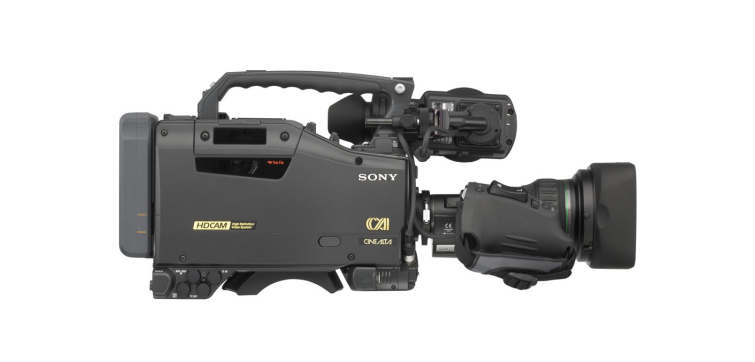 Image via TheHDHouse
Image via TheHDHouse
George Lucas worked with Sony to develop this camera for his upcoming Star Wars Episode II: Attack of the Clones, but first showed it to director Robert Rodriguez, who would become the first to utilize it. Offering a resolution of only 1920X1080 that had to be cropped down to 1920X817 for widescreen, this camera showed that digital had a long way to go before surpassing the quality that film offered. With that being said, it also showed that digital was at least potentially viable in the future.
5. RED ONE
If the Sony HDW-F900 highlighted the weaknesses of digital filmmaking, the RED ONE highlighted its strengths. Oakley owner Jim Jannard founded RED Cinema in 2005, and completed the company’s first camera, the RED ONE, in 2007.
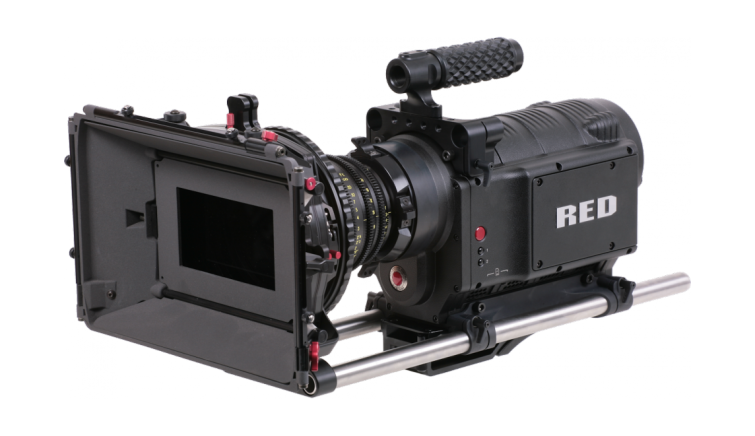 Image via Vocas
Image via Vocas
The ONE was designed to revolutionize digital cinema, and did just that, as the first ever 4K-capable camera. Also offering high frame rates and surprisingly impressive low-light performance, the RED ONE made the digital platform seem a viable one for the first time. Since then, RED has excelled with many newer models that are constantly pushing the limits of what one can do on a budget.
6. IMAX
IMAX premiered to audiences is in the early 1970s, with a showing of Tiger Child in Osaka, Japan, and later, its first permanent installation in Toronto, Canada. Yielding an unforeseen film size three times larger than that of standard 70mm, IMAX is roughly the digital equivalent of a 12K image. Unfortunately, the size of the film stock limited the running time of an IMAX feature, and they are therefore mostly used to show documentaries in museums and the like.
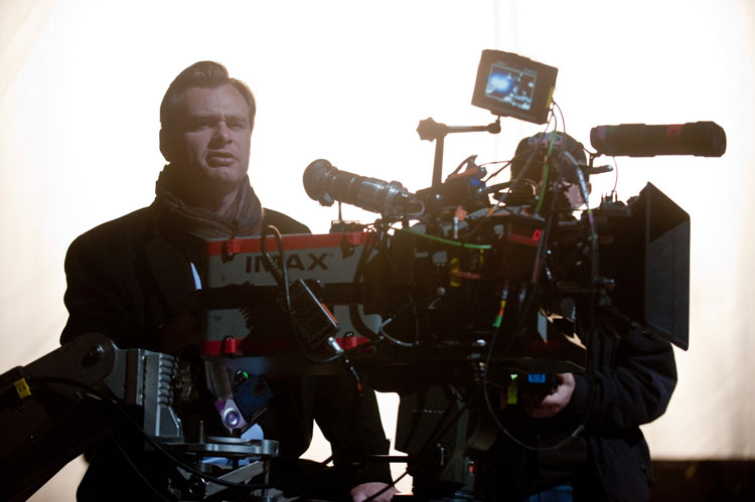 Image via MovieMail
Image via MovieMail
As technology has progressed, a number of Hollywood productions have made it to IMAX screens, the first being Apollo 13. 6 years later, The Dark Knight was the first ever mainstream feature to actually shoot parts of the film with an IMAX camera. A handful of later films have used IMAX cameras, with The Dark Knight Rises holding a record of 72 minutes of IMAX footage. Star Wars: The Force Awakens is one of the more recent examples of brief IMAX use, featuring it during the Millennium Falcon chase scene on Jakku. The upcoming Avengers: Infinity War will be the first ever full-length feature shot entirely in IMAX.
7. ARRI ALEXA
The ARRI ALEXA has become the final nail in the coffin for film. When ARRI, an established name and frontrunner of Hollywood film, made the transition to digital cinematography, it arguably marked the true start of the digital era. Up until 2010, digital movies were becoming increasingly prevalent, but still didn’t dominate all facets of the industry. Sony and RED were both excelling in digital cinema, but the ALEXA soon overcame them both to become by far the most common platform for digital shooting.
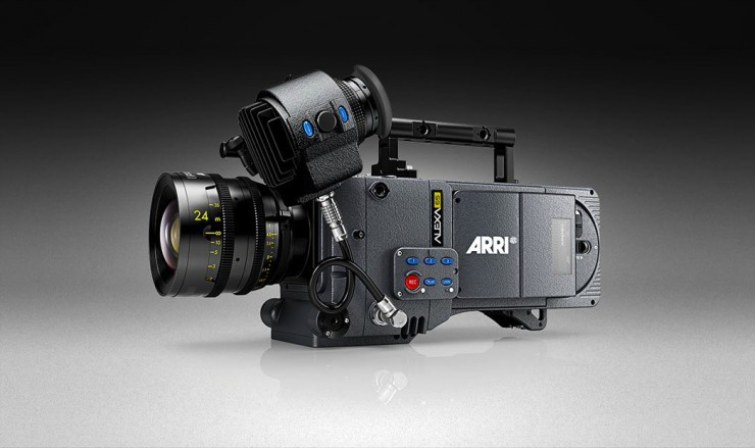 Image via NoFilmSchool
Image via NoFilmSchool
The ALEXA took digital to the point of exceeding most of the capabilities of film, even convincing acclaimed cinematographer and film lover Roger Deakins to make the switch and declare digital the future. With the stunning possibilities that the new ALEXA 65 showcased in The Revenant, it’s now more clear than ever that times are changing.
The history of film has seen so many variations of camera technology that have almost all contributed something to the industry, but these cameras were able to stand out with true innovation that impacted cinema forever.
What camera technology has furthered your own creativity? Let us know in the comments below.



